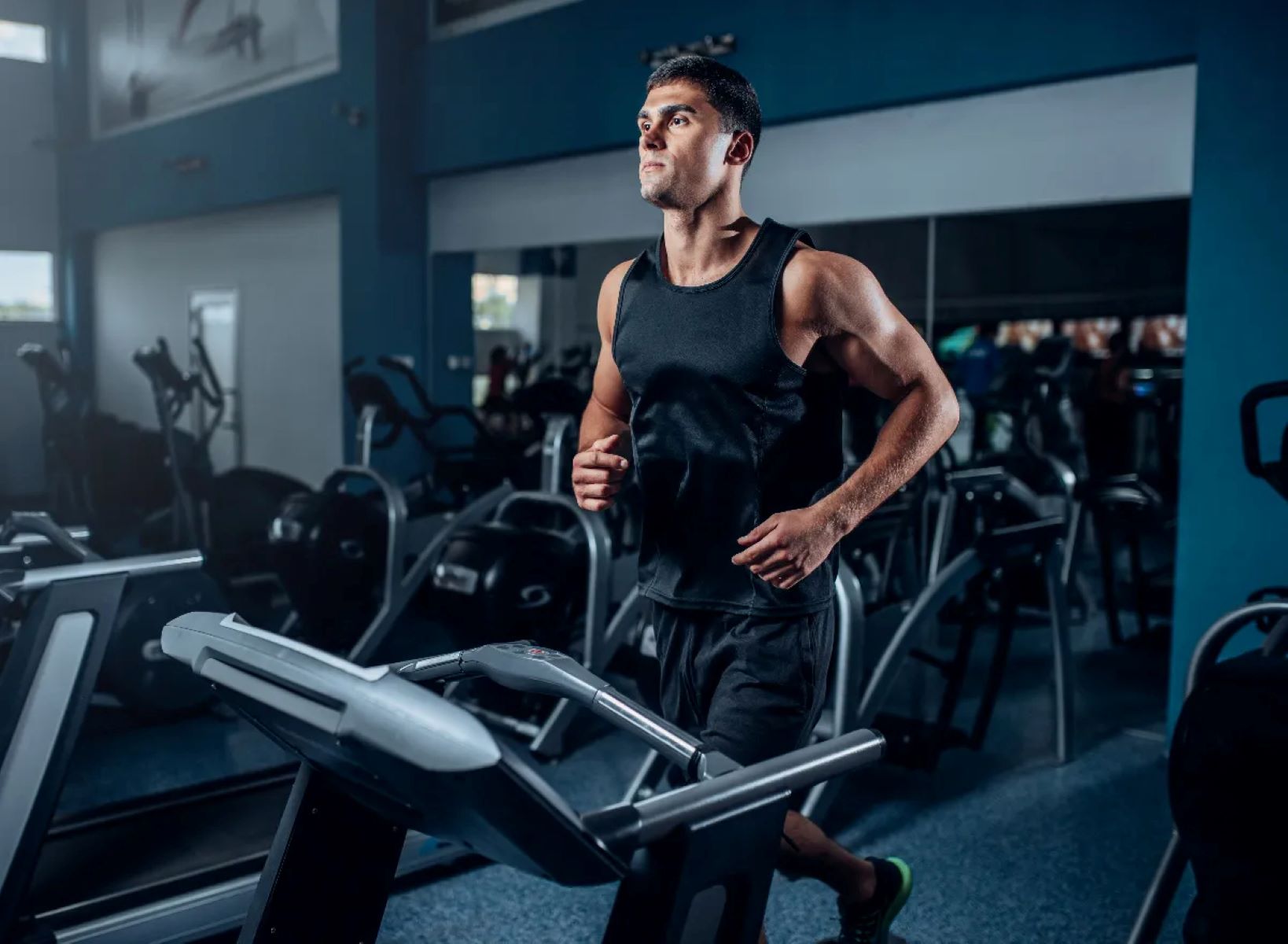Home>Misc>Featured>How Does Fitness Tracker Measure And Keep Track Of Blood Pressure
Featured
How Does Fitness Tracker Measure And Keep Track Of Blood Pressure
Published: October 17, 2023
Discover how featured fitness trackers accurately measure and monitor your blood pressure, helping you stay on top of your health and wellness.
Introduction
Welcome to the world of fitness trackers, where technology meets health and wellness. In today’s fast-paced society, people are becoming increasingly conscious about their physical well-being and are seeking ways to monitor and improve their health. One of the key indicators of overall health is blood pressure.
Blood pressure is the force exerted by the blood against the walls of the arteries as it flows through the body. It is measured in millimeters of mercury (mmHg) and reported as two values: systolic pressure over diastolic pressure. Systolic pressure refers to the pressure during the heartbeat, while diastolic pressure refers to the pressure between heartbeats. Keeping blood pressure within a healthy range is crucial for cardiovascular health and can prevent conditions such as high blood pressure, heart disease, and stroke.
While getting an accurate and regular measurement of blood pressure used to involve regular visits to the doctor or a clinic, technology has made it possible to monitor blood pressure in the comfort of your own home. One such technology is the fitness tracker.
Fitness trackers have gained popularity in recent years as wearable devices that can track various aspects of health and fitness. From step counting to sleep tracking, these devices provide valuable insights into our daily activities. Many modern fitness trackers also offer the ability to measure and monitor blood pressure.
This article will delve into how fitness trackers measure and keep track of blood pressure. We will explore the mechanisms behind blood pressure measurement, the accuracy of fitness tracker readings, and provide tips for ensuring accurate blood pressure tracking. By the end, you will have a comprehensive understanding of how fitness trackers play a role in monitoring this vital health metric.
Understanding Blood Pressure
Before we dive into how fitness trackers measure blood pressure, let’s first understand what blood pressure is and why it is important to keep it within a healthy range.
As mentioned earlier, blood pressure is the force exerted by the blood against the walls of the arteries as it flows through our body. It is a vital sign that provides valuable information about the health of our cardiovascular system. Blood pressure is measured in millimeters of mercury (mmHg) and is recorded as two numbers: the systolic pressure over the diastolic pressure.
The systolic pressure represents the maximum pressure your heart generates when it contracts and pumps blood out into the arteries. The diastolic pressure, on the other hand, represents the minimum pressure in your arteries when your heart is at rest and refilling with blood between beats.
Having a healthy blood pressure is essential for overall well-being. High blood pressure, also known as hypertension, can put extra strain on your heart and blood vessels, leading to serious health problems such as heart disease, stroke, and kidney disease. On the other hand, low blood pressure, or hypotension, can cause dizziness, fatigue, and fainting.
Normal blood pressure is typically around 120/80 mmHg, with the systolic value of 120 and the diastolic value of 80. However, it is important to note that optimal blood pressure levels can vary depending on factors such as age, gender, and overall health. Consult with your healthcare provider to determine your target blood pressure range.
While blood pressure naturally fluctuates throughout the day in response to various activities and stressors, persistently high or low blood pressure readings should be monitored and managed appropriately. Regular blood pressure monitoring helps detect any potential issues early on and allows for timely intervention.
Now that we have a basic understanding of blood pressure and its significance, let’s explore how fitness trackers utilize technology to measure and keep track of this vital health metric.
Fitness Trackers and Blood Pressure Measurement
Fitness trackers have expanded beyond their initial purpose of tracking steps and calories burned. Many modern fitness trackers now offer the capability to measure and monitor blood pressure. This integration of blood pressure monitoring into wearable devices has revolutionized how we can keep track of this important health metric.
The inclusion of blood pressure measurement in fitness trackers provides several benefits. Firstly, it allows for convenient and regular monitoring of blood pressure without the need for frequent visits to the doctor’s office or clinic. This accessibility empowers individuals to take control of their own health and make informed decisions about their lifestyle and healthcare management.
Secondly, the ability to track blood pressure trends over time provides valuable insights into long-term health patterns. By monitoring blood pressure regularly, individuals can identify any abnormal fluctuations or consistent high or low readings that may require medical attention. This early detection can lead to timely interventions and better management of cardiovascular health.
Moreover, by combining blood pressure measurements with other fitness data, such as heart rate and activity levels, fitness trackers can provide a more holistic view of overall health and wellness. This integration allows users to understand how their lifestyle choices, like exercise and stress levels, can impact their blood pressure readings and make informed decisions to optimize their cardiovascular health.
It’s important to note that while fitness trackers are a convenient tool for blood pressure measurement, they should not replace regular visits to a healthcare professional. Doctors and medical professionals have the expertise to interpret blood pressure readings and provide personalized recommendations and treatment plans based on comprehensive medical histories and examinations.
In the next section, we will explore how fitness trackers measure blood pressure and what factors can affect the accuracy of these measurements. Understanding the technology behind blood pressure measurement on fitness trackers will help us better interpret and utilize the data provided by these devices.
How Fitness Trackers Measure Blood Pressure
Measuring blood pressure accurately is a complex process that traditionally required a cuff and a stethoscope. However, fitness trackers have employed advanced technology to provide a simplified and more convenient way of measuring blood pressure.
Most fitness trackers that monitor blood pressure rely on optical sensors to capture data. These optical sensors use light emitted by the device to measure changes in blood flow beneath the skin. By analyzing these changes, the fitness tracker can estimate the user’s blood pressure.
One common method is called photoplethysmography (PPG), which measures blood volume changes using light sensors. When the fitness tracker’s optical sensor emits light onto the skin, blood vessels absorb the light differently based on their pulsations. The reflected light is then detected by the sensor, and the fitness tracker’s algorithm calculates the blood pressure values based on this information.
Another method used by some fitness trackers is called oscillometry. Oscillometry measures blood pressure indirectly by detecting the vibrations in the arteries caused by blood flow. The fitness tracker’s sensor applies pressure to the skin and measures the fluctuations in pressure to estimate the user’s blood pressure.
It’s important to note that while these methods provide an estimate of blood pressure, the accuracy may vary from person to person and device to device. Fitness trackers are not medical devices and may not provide the same level of accuracy as professional medical equipment.
Factors such as skin tone, skin thickness, motion artifacts, and device calibration can affect the accuracy of blood pressure measurements on fitness trackers. Inaccurate readings can occur due to incorrect positioning of the device or interference from external factors like ambient light.
Additionally, fitness trackers often require calibration for more precise measurements. This calibration may involve comparing the blood pressure readings obtained from the tracker to a traditional cuff-based measurement. It’s important to follow the manufacturer’s guidelines and ensure proper calibration for accurate results.
While fitness trackers provide a convenient way to monitor blood pressure, it is recommended to use them as tools for tracking trends and getting insights into overall cardiovascular health rather than relying solely on their readings for medical decisions. It’s always best to consult with a healthcare professional for a comprehensive assessment and interpretation of blood pressure values.
In the next section, we will discuss the accuracy of blood pressure readings obtained from fitness trackers and the factors that can influence their reliability.
Accuracy of Fitness Tracker Blood Pressure Measurements
When it comes to the accuracy of blood pressure measurements obtained from fitness trackers, it’s important to remember that these devices are not medical-grade equipment. While they can provide a convenient way to track trends and monitor overall cardiovascular health, the accuracy of the readings may vary.
Several factors can influence the accuracy of fitness tracker blood pressure measurements. These include the technology used, device calibration, individual variability, and external factors. It’s crucial to understand these factors and their impact on the reliability of the readings.
The technology used by fitness trackers, such as optical sensors and algorithms, provides an estimate of blood pressure based on data captured from the user’s body. While these methods have improved over time, they may not be as accurate as the gold standard auscultatory method using a cuff and stethoscope.
Device calibration is another critical factor. Fitness trackers may require initial calibration by comparing their readings with a traditional cuff-based measurement. Regular recalibration is also recommended to maintain accuracy over time. Failure to calibrate the device properly can lead to inaccurate blood pressure readings.
Individual variability can also affect the accuracy of fitness tracker blood pressure measurements. Factors such as skin tone, skin thickness, and anatomical differences can impact the device’s ability to capture accurate data. It’s important to consider these individual factors when interpreting the readings.
External factors, such as motion artifacts and ambient light, can introduce errors in blood pressure measurements obtained from fitness trackers. Physical movement, as well as improper positioning of the device, can affect the reliability of the readings. Additionally, ambient light can interfere with the accuracy of optical sensors, leading to inaccurate data.
It’s worth noting that scientific studies have shown mixed results regarding the accuracy of fitness trackers in measuring blood pressure. Some studies have reported reasonably accurate readings, while others have shown significant discrepancies compared to traditional cuff-based measurements.
To improve the accuracy of blood pressure measurements obtained from fitness trackers, it’s essential to follow best practices. This includes wearing the device correctly, ensuring proper device calibration, and minimizing external factors that can interfere with the measurements. It is recommended to use fitness trackers as tools for tracking trends and getting insights into overall cardiovascular health but to consult with a healthcare professional for accurate medical assessments and decisions.
In the next section, we will discuss some factors that can affect the accuracy of blood pressure measurements on fitness trackers and provide tips for ensuring more accurate tracking.
Factors Affecting Blood Pressure Accuracy on Fitness Trackers
While fitness trackers offer the convenience of monitoring blood pressure at any time, it’s important to be aware of the factors that can impact the accuracy of these measurements. Understanding these factors will help users interpret their readings more effectively and make informed decisions regarding their cardiovascular health.
1. Device Fit and Positioning: Proper positioning of the fitness tracker is crucial for accurate blood pressure measurement. Ensure that the device is worn snugly on the wrist, aligned with the heart, and positioned at heart level for the most accurate readings. Improper fit and positioning can lead to inaccurate readings.
2. Motion Artifacts: Physical movement can introduce motion artifacts and impact the accuracy of blood pressure readings. It’s important to stay as still as possible during the measurement process to minimize the influence of motion artifacts on the data captured by the fitness tracker.
3. Calibration: Fitness trackers that measure blood pressure often require calibration for accurate readings. Follow the manufacturer’s instructions to calibrate the device properly, especially during the initial setup, and recalibrate regularly as recommended to ensure ongoing accuracy.
4. Individual Variability: Individual factors, such as skin tone, skin thickness, and anatomical differences, can affect the accuracy of blood pressure measurements on fitness trackers. These devices may not perform equally well for everyone due to these variations. Consider your individual characteristics when interpreting the readings.
5. External Factors: External factors, such as ambient light, can interfere with the accuracy of optical sensors used in fitness trackers. Excessive ambient light can affect the ability of the sensors to capture accurate data. Ensure that the measurement environment is well-lit but avoid direct exposure to bright light sources.
6. Environmental Conditions: Extreme temperatures or humidity levels can impact the performance of fitness trackers and affect the accuracy of blood pressure measurements. Be mindful of the environmental conditions in which you are using the device and ensure it is within the recommended operating range.
7. Device Quality and Technology: Not all fitness trackers are created equal when it comes to accuracy. Different devices utilize different technologies and algorithms to estimate blood pressure. It’s important to choose a reputable brand and consider user reviews and scientific studies regarding the accuracy of the device.
Remember, while fitness trackers can provide valuable insights into cardiovascular health, they are not a replacement for professional medical advice. For accurate medical assessments and decisions, it’s always best to consult with a healthcare professional.
Now that we have explored the factors affecting blood pressure accuracy on fitness trackers, let’s move on to some tips for ensuring more accurate tracking of blood pressure.
Tips for Accurate Blood Pressure Tracking with Fitness Trackers
While fitness trackers provide a convenient way to monitor blood pressure, there are several tips to keep in mind to ensure accurate tracking and reliable readings. By following these tips, users can optimize their experience with fitness trackers and obtain more accurate blood pressure measurements.
1. Proper Device Placement: Ensure that the fitness tracker is worn correctly on the wrist, snugly but not too tight. It should be positioned at heart level for accurate readings. Consult the device’s user manual or manufacturer’s guidelines for proper placement instructions.
2. Stillness During Measurements: Stay as still as possible during blood pressure measurements to minimize motion artifacts that can impact accuracy. Avoid unnecessary movement or talking during the process to obtain the most reliable readings.
3. Regular Calibration: Follow the manufacturer’s instructions for calibrating the fitness tracker. Calibration may involve comparing the device’s readings with a traditional cuff-based measurement for initial setup, as well as regular recalibration to maintain accuracy over time.
4. Consistent Measurement Conditions: Try to measure blood pressure in similar conditions each time, such as in a quiet environment with a comfortable room temperature. Consistency in measurement conditions can help minimize external factors that can affect accuracy.
5. Limit External Interference: Ensure that the measurement area is well-lit, but avoid direct exposure to bright lights or intense ambient light sources. Excessive ambient light can interfere with the accuracy of optical sensors used in fitness trackers.
6. Monitor Battery Life: Low battery levels can impact the performance of fitness trackers and compromise the accuracy of blood pressure measurements. Regularly monitor and replace the batteries as needed to ensure optimal device performance.
7. Compare with Professional Measurements: Periodically compare the blood pressure readings obtained from the fitness tracker with measurements taken by a healthcare professional using a traditional cuff-based method. This can help identify any discrepancies and provide a benchmark for accuracy.
8. Consider Individual Factors: Take into account individual factors, such as skin tone, skin thickness, and anatomical differences, when interpreting blood pressure readings. These factors can influence accuracy and may result in variations in readings between individuals.
Remember that while fitness trackers can provide valuable insights into cardiovascular health, they are not a substitute for professional medical advice. If you have concerns about your blood pressure or need accurate medical assessments, consult with a healthcare professional.
By following these tips, users can help ensure more accurate blood pressure tracking with fitness trackers and make more informed decisions regarding their cardiovascular health.
Now that we have discussed tips for accurate blood pressure tracking, let’s conclude our exploration of how fitness trackers measure and monitor blood pressure.
Conclusion
Fitness trackers have revolutionized the way we monitor and track our health, including our blood pressure. These wearable devices offer a convenient and accessible way to keep tabs on this vital health metric, empowering individuals to take control of their cardiovascular well-being.
Understanding blood pressure and its significance is crucial for maintaining overall health. Fitness trackers have integrated blood pressure measurement capabilities, providing users with insights into their cardiovascular health trends and patterns. While these devices offer convenience, it is important to remember that they are not medical-grade equipment and may not provide the same level of accuracy as professional medical devices.
During blood pressure measurement, factors such as device fit and positioning, motion artifacts, calibration, individual variability, and external factors can influence the accuracy of readings obtained from fitness trackers. By being aware of these factors and following best practices, users can optimize the accuracy of their blood pressure tracking and obtain more reliable data.
It is crucial to use fitness trackers as tools for monitoring trends and getting insights into overall cardiovascular health, but to always consult with healthcare professionals for accurate medical assessments, interpretations, and decisions. These professionals have the expertise to guide individuals based on comprehensive medical histories and comprehensive examinations.
In conclusion, fitness trackers have expanded beyond step counting and sleep tracking to include blood pressure monitoring as part of their capabilities. They provide a valuable tool for tracking trends, gaining insights, and taking proactive steps towards maintaining cardiovascular health. By understanding the limitations of these devices and following best practices, individuals can make the most of fitness tracker blood pressure measurements while prioritizing their overall well-being.


